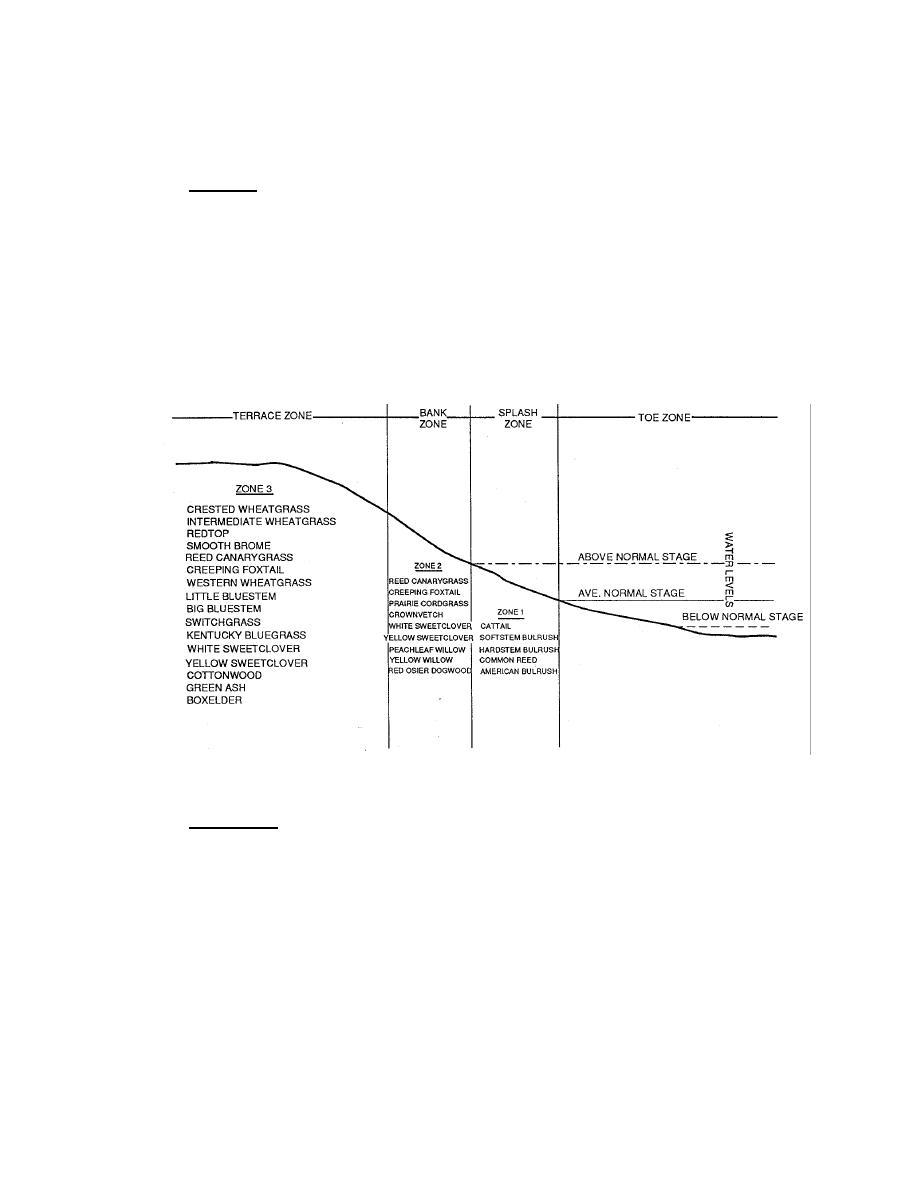
|
|

|
||
 Appendix B: Bioengineering for Streambank Erosion Control -- Guidelines
facilitate prescription of the erosion control treatment, and plants to use at relative locations
on the streambank.
Toe zone. That portion of the bank between the bed and average normal stage. This zone
is a zone of high stress and can often be undercut by currents. Undercutting here will likely
result in bank failure unless preventative or corrective measures are taken. This zone is often
flooded greater than 6 months of the year.
Figure 6 illustrates the plant species prescribed for each streambank zone on the upper
Missouri River, except for the toe zone. The toe zone would likely have to be treated by
some hard material, such as rock, stone, log revetments, cribs, or a durable material such as
a geotextile roll (to be discussed later).
Figure 6. Possible species to plant by zone on the Missouri River.
Splash zone. That portion of the bank between normal high-water and normal low-water
flow rates. This and the toe zone are the zones of highest stress. The splash zone is exposed
frequently to wave-wash, erosive river currents, ice and debris movement, wet-dry cycles, and
freezing-thawing cycles. This section of the bank would be inundated throughout most of the
year (at least 6 months/year), but note that a large part of this inundation may occur in the
dormant season of plants. The water depths will fluctuate daily, seasonally, and by location
within the splash zone.
Only herbaceous emergent aquatic plants like reeds, rushes, and sedges are suggested for
planting in the splash zone (Figure 6). These types of plants can tolerate considerable
flooding and are more likely to live in this zone. They possess aerenchyma, cells with air
spaces, in roots and stems that allow the diffusion of oxygen from the aerial portions of the
B-19
|
||
 |
||